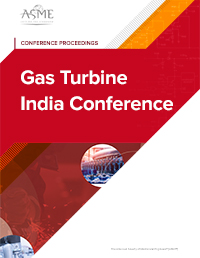Abstract
Dynamic and kinematic characteristics of non-reactive turbulent swirl flow studies are significant for optimizing burner design, stability, and validating numerical simulations. The experiments were conducted on unconfined double swirler burner to understand the structure of non-reactive turbulent swirl flow for various inner and outer swirl Reynold’s numbers (Re). The burner is designed with double swirlers, inner and outer; both are medium swirlers with geometric swirl number of 0.8. The instantaneous 3C-2D velocity field in a plane is obtained by using Stereo Particle Image Velocimetry (SPIV) in backward-backward scattering position. In each case, 1000 image pairs are acquired with appropriate calibration and post-processed using cross-correlation and particle tracking technique. Turbulence parameters such as Reynolds stress and turbulence intensity as well as the velocity field of all three components are analyzed for various Re that are useful to understand the effect of turbulent mixing. Numerical study for the same cases are carried out, and experimental results are compared with numerical results. A computational domain contains 1146217 cells are generated for the 3D numerical simulation, and Large Eddy Simulation (LES) approach is used to predict the unsteady behavior of the flow fields. The increase in inner swirl Re increases both axial and azimuthal velocity component, which facilitate mixing in gas turbine application. The inner recirculation zone moves downstream with the rise in inner swirl Re and subsequently increasing the outer swirl Re leads to the operating condition where the blowout may occur.












